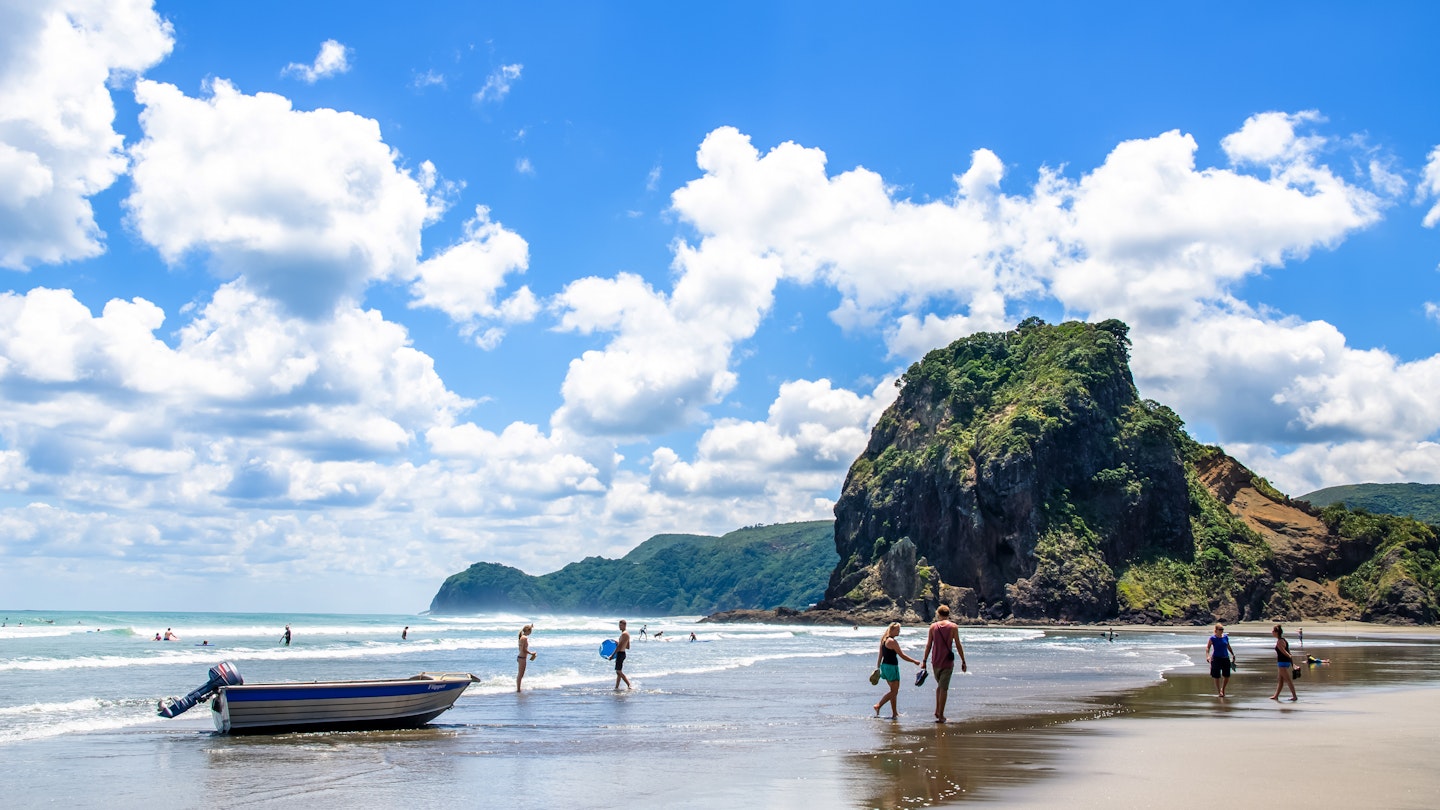
When can I travel again? How different countries are preparing for the return of tourism

May 25, 2020 • 7 min read

Countries, such as New Zealand (pictured), may open their borders to international travellers this year ©Shutterstock
Countries are grappling with how to safely resume tourism as coronavirus numbers recede. Last week the European Union called for a safe reopening of borders between member states with similar rates of COVID-19 infections. And countries and regions around the world who have claimed success in managing the virus are taking concrete steps to reopen hotels and hospitality facilities, and establish safe travel zones.
But due to the unpredictable nature of the virus, policies could change at the last minute if there's a potential risk of a rise in infections. Our ability to travel for leisure over the next few months will be impacted by each government's public health advice; trace and test capabilities; border protocols, and social distancing laws. For now, as travel restrictions are eased, here's a look at how tourism may resume this year.
Australia and New Zealand
Australia and New Zealand have formally agreed to introduce a "trans-Tasman travel bubble" to enable travel to resume between the neighbouring countries once it is safe to do so. The agreement would allow passengers to travel between the two nations without a 14-day quarantine period on either side. No timetable has been drawn up yet, though Australia's prime minister Scott Morrison has suggested October is the earliest it might open to international travellers.
Read more: New Zealand and Australia may introduce exclusive 'travel bubble' arrangement
Bahamas
The Bahamas is hoping to reopen on 1 July, according to local media, with prime minister Dr Hubert Minnis warning the dates are subject to change, depending on health and safety guidelines. "Our resorts, our airports and our seaports are finalizing the health and safety protocols that will be necessary for us to provide for a re-opening," said Minnis. "Taking into account what is being done within the region and around the world, these extensive guidelines will be designed to provide for reasonable assurance that travel and leisure are generally safe. Any such reopening to commercial-scale traffic will also be dependent on the ongoing stabilization of the COVID-19 outbreak in the Bahamas."
Read more: These Caribbean countries are reopening for tourists next month
Dubai
Authorities in Dubai have eyed a July opening for tourism but warned that the situation could change and plans could be delayed until September. Restaurants and retail outlets reopened on 24 April with strict social distancing measures when the country relaxed lockdown. Now Dubai is looking at ways to safely welcome tourists again.
"Many things remain closed and it's more about the bilateral discussions. Is it going to be July when things start slowly opening up? Is it going to be September? We just need to make sure we’re ready if things come earlier than expected,” Helal Al Marri, director general of Dubai’s Department of Tourism and Commerce Marketing, told Bloomberg TV.
Estonia, Latvia and Lithuania
Similar to Australia and New Zealand's plan, Estonia, Latvia and Lithuania launched Europe's first travel bubble on 15 May. Speaking on Twitter, Estonia's prime minister Juri Ratas said the move is "a big step towards life as normal." Under the agreement, citizens are free to travel between the three Baltic states without quarantine, though visitors from outside the region will need to self-isolate for 14 days.
"We showed a good example by stating, very clearly, that only countries which successfully dealt with the situation can open themselves up," Lithuanian prime minister Saulius Skvernelis told Reuters, adding that Poland and Finland may join their bubble later in the year as they successfully deal with the outbreak.
Read more: These Baltic countries are the latest region creating a "travel bubble"
Fiji
Fiji is keen to join Australia and New Zealand in their arrangement as New Zealand's prime minister Jacinda Ardern has suggested the "trans-Tasman travel bubble" could be expanded to some Pacific Island nations with few or no cases of coronavirus. Tourism accounts for nearly 40% of the country's GDP and according to the Guardian, 41% of its tourists come from Australia and 23% from New Zealand. Fiji's economy minister Aiyaz Sayed-Khaiyum has confirmed to local media that talks are taking place with respective ministries but the practicalities still need to be ironed out.
Germany
Land borders in Germany reopened last week with Luxembourg, though border controls with France, Switzerland and Austria will continue until 15 June. Currently, all arrivals must self-isolate for 14 days but Germany is hoping to allow foreign holidays to resume by the end of summer.
Campsites and hotels are opening to domestic visitors at the end of the month. While many bars and restaurants throughout the country have already reopened at reduced capacity. In Berlin, museums are now admitting visitors.
Despite its plans to reopen, Germany's foreign minister Heiko Maas warned against a return to 'business as usual'. "We want to make summer holidays possible, but only under responsible circumstances," he said in a statement. "That is why it will be necessary to tell people very clearly that there will be restrictions everywhere — on beaches, in restaurants and in city centres."

Greece
Greece has managed to maintain a low infection rate and is considering introducing measures to safely reopen its borders to tourists on 15 June. Attractions such as the Acropolis opened to visitors on 18 May with workers in face masks and plastic shields, as the government began easing lockdown restrictions. Beaches reopened on 4 May for locals under new rules stipulating that sun loungers are required to be 1.5 metres (five feet) apart and no more than 40 people are permitted per 1000 square metres of space. Beach bars remain closed but restaurants and tavernas will open with outdoor seating next month.
Greece's prime minister Kyriakos Mitsotakis told the Guardian: "if we are to think of the possibility of travelling this year it has to be under specific new rules. We have to have new rules for hotels, new rules for beaches, new rules for pools, new rules for breakfast buffets, new rules for tour buses."
Read more: Greece eyes opening hotels in July - here's what travellers can expect
Iceland
Iceland's comprehensive testing measures have played off in keeping infection rates low and as such, prime minister Katrin Jakobsdottir has said the country will welcome visitors by 15 June. The government is working with the National University Hospital of Iceland to devise a system that will allow travellers to safely skip the 14-day quarantine period when arriving into the country.
Travellers will likely be required to download and use the official tracing app already in use by 40% of the population in Iceland.
Read more: Iceland set to open to tourists in June with free COVID-19 tests upon arrival
Indonesia
The Indonesian government is planning to welcome overseas tourists from October but only to parts of the country where the coronavirus outbreak has been successfully maintained, such as Bali, the Riau province and Yogyakarta.
Read more: How Bali plans to reopen to tourists from October
Italy
Italy will ease international travel restrictions from 3 June by opening borders to EU citizens without quarantine. As lockdown is relaxed, some cafes and restaurants have opened with outdoor seating. Beaches are expected to follow under new guidelines, including assigned sun loungers and umbrellas for visitors that will be placed five metres apart. Visitors are required to wear facemasks when they are away from their umbrella and groups are not allowed to congregate on the sand or in the sea.
Read more: Italy's borders will reopen to tourists in June
Portugal
Hotels in regions like the Algarve are hoping to open in June and July but the country's borders remain closed to international tourists for now. However, Portugal's tourist board is working behind the scenes with the national health authority to help tourism businesses welcome visitors again with the new "Clean & Safe" campaign; a certificate awarded to those who meet increased government-controlled hygiene standards. A spokesperson for the tourism board confirmed to Lonely Planet that as of 14 May, 3856 businesses have signed up for the stamp.
The country entered the second of its three phased plan to gradually exit lockdown on 18 May with restaurants, cafés, patisseries, terraces, promenades and shops of up to 400 square metres open to the public.
Read more: This is how Portugal is planning to safely open hotels and restaurants
Spain
Spain is looking to open its borders to international tourists on 1 July when lockdown ends, the prime minister Pedro Sánchez confirmed on Saturday. Quarantine requirements for those entering the country will be lifted and restrictions on movement will have eased by that stage.
Phase one of lockdown restrictions began in some parts of Spain on 4 May, with bars, restaurants and small shops operating at reduced capacity. Hotels are allowed to open rooms to guests but not communal spaces and museums can open with a third of capacity. Beaches are expected to open in late June, with some regional governments considering allocating time slots for visitors to avoid overcrowding.
Read more: Spain urges tourists to 'plan your vacations in our country' as borders reopen in July
This article was first published on 20 May and updated on 25 May, 2020.
Lockdowns are easing globally as the planet adjusts to a new normal. Find out how COVID-19 is changing travel.
Explore related stories


 ShoppingNuremburg vs Cologne: which is the best Christmas market in Germany?
ShoppingNuremburg vs Cologne: which is the best Christmas market in Germany?Nov 7, 2024 • 6 min read







